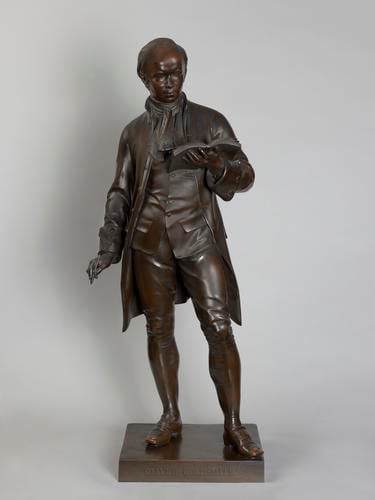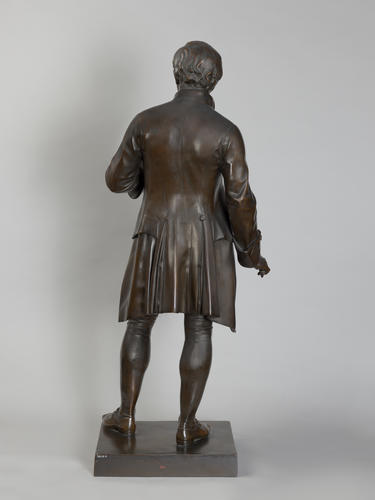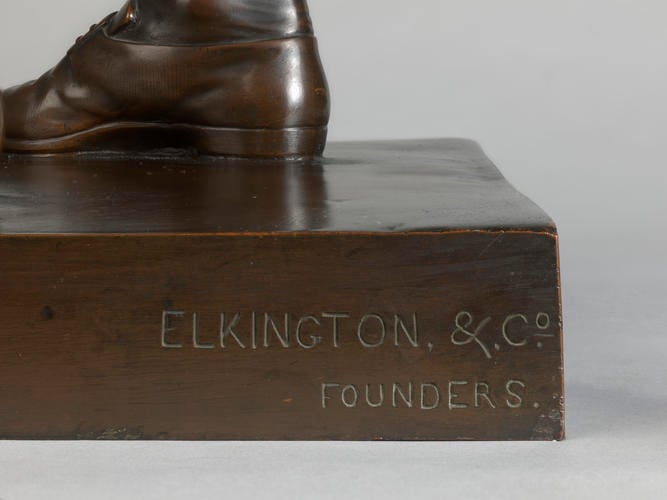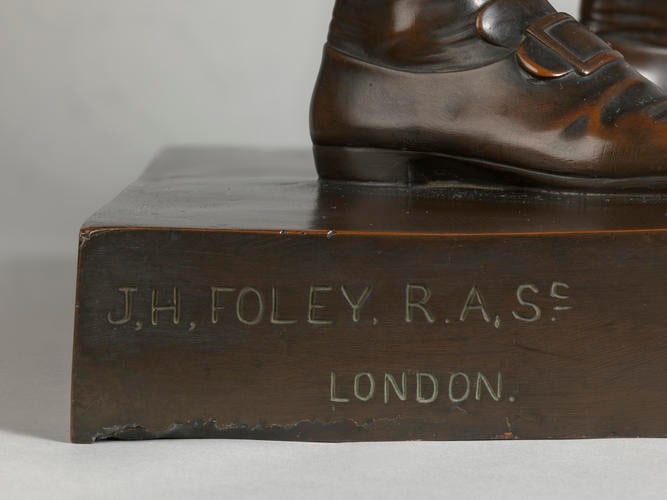-
1 of 253523 objects
John Henry Foley (1818-74)
Oliver Goldsmith c. 1865
Bronze | 98.0 x 39.0 x 29.0 cm (whole object) | RCIN 36124
-
Cast in bronze by the Birmingham founders Elkington & Co after a model by the sculptor John Henry Foley, this statue of the Irish author Oliver Goldsmith (c.1728–1774) is a reduced version of a larger one erected in 1864 outside Trinity College in Dublin. It was commissioned with another full length statue of the Irish political writer Edmund Burke. Documents in the Royal Archive indicate that Queen Victoria contributed £100 towards the commission of the original statue of Goldsmith at Trinity College. The smaller version of Burke’s full-length statue, is also in the Royal Collection (RCIN36131) and is dated 1865.
Goldsmith, the eighteenth century Irish writer famous for his novel The Vicar of Wakefield published in 1766 - which remained a favourite of nineteenth century Victorian readers - is depicted standing, wearing contemporary dress and looking down reading a book which he holds on his left hand, and with a pen in his right hand.
Foley, like Goldsmith and Burke before him, had left his native Ireland to pursue a career in London where he moved in 1834 to attend the Royal Academy School. His first works to be exhibited at the Royal Academy were two statues of Innocence and The Death of Abel. A reproduction of the full length allegorical statue of Innocence made by Copeland in white porcelain and exhibited at the 1851 Great Exhibition was acquired by Queen Victoria for Osborne House (RCIN 34690). His most important royal commission – and perhaps his most famous – were the Asia marble group and the monumental gilt-bronze seated statue of Prince Albert for the Albert Memorial.
Foley’s style is identifiable for his realism and his emphasis in rendering naturalistic detail; it contrasted with the more idealised and conventional style of the neo-classical sculptors of his generation. Foley became an influential figure and source of inspiration for artists of the late nineteenth century New Sculpture movement.
The statues were possibly acquired by Queen Victoria. -
Creator(s)
(sculptor)(bronze maker)(nationality) -
Medium and techniques
Bronze
Measurements
98.0 x 39.0 x 29.0 cm (whole object)
Category
Object type(s)



